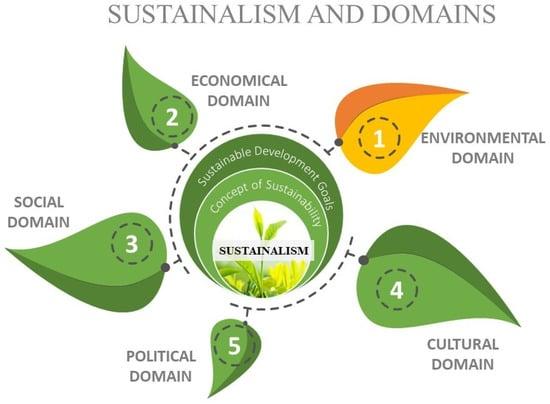In the intricate tapestry of human endeavor, each thread is woven with experiences that reflect the triumphs and tribulations of those boldly navigating their journeys. In this exploration, we delve into the multifaceted strategies employed by individuals and organizations striving for excellence, uncovering the challenges they faced along the way. From the initial spark of innovation to the hurdles that test resilience, these narratives provide a rich landscape of lessons learned. Here, we aim to illuminate the pathways forged by tenacity, resourcefulness, and reflection, showcasing how every obstacle can serve as a stepping stone towards greater understanding and success. Join us as we embark on a journey through the strategies, challenges, and invaluable insights that shape our collective pursuit of progress.
Exploring Strategic Approaches in Diverse Environments
In today’s rapidly evolving world, organizations are increasingly embracing strategic approaches to thrive in diverse environments. These strategies often encompass a range of methods that are tailored to meet unique cultural, economic, and social contexts. Some common tactics include:
- Cross-Cultural Training: Equipping teams with the skills to navigate cultural nuances.
- Local Partnerships: Building alliances with local businesses to enhance market understanding.
- Agile Methodologies: Adapting quickly to changes and feedback within various markets.
However, these strategies are not without their challenges. Organizations may face issues such as language barriers, differing regulatory landscapes, and varying expectations across different communities. Lessons learned through these experiences are invaluable; they include:
- Embracing Adaptability: Adjusting approaches in real-time based on feedback.
- Investing in Research: Understanding the local market conditions before launching initiatives.
- Cultivating Resilience: Acknowledging setbacks as opportunities for growth and iteration.
| Strategy | Challenge | Lesson Learned |
|---|---|---|
| Cross-Cultural Training | Miscommunication | Importance of clarity in messaging |
| Local Partnerships | trust Building | Time investment is critical |
| Agile Methodologies | Rapid Changes | Staying ahead requires continual adjustment |

Navigating Common Challenges in Strategy Implementation
Effective strategy implementation is fraught with challenges that can hinder progress and compromise objectives. One of the most prevalent obstacles is the **lack of alignment between teams**. When various departments or units pursue differing goals, it can lead to confusion and dilute the impact of a unified strategy.To combat this, organizations often establish regular cross-functional meetings to ensure everyone is on the same page and understands how their roles contribute to the larger vision. Additionally, **insufficient resource allocation** frequently emerges as a barrier; without the necessary budget and personnel, strategies can falter. By conducting thorough resource assessments ahead of time, firms can better match their strategic ambitions with the capabilities required for realization.
Another common challenge is **resistance to change**, as employees may be hesitant to adopt new processes or technologies, fearing disruption to their routines. To mitigate this, leaders can employ **change management techniques**, such as involving employees in the strategy-building process to foster ownership and reduce anxiety. Furthermore, organizations can learn from past implementations by analyzing what didn’t work and why. A practical approach is documenting these experiences to create a clear **lessons learned repository** that future teams can reference.Below is a simplified table showcasing the typical challenges, corresponding strategies, and lessons learned from various organizations:
| challenge | Strategy | Lesson Learned |
|---|---|---|
| Misalignment | Cross-functional meetings | regular dialog is key. |
| Resource Limitation | Thorough resource assessment | Plan budget allocations meticulously. |
| Resistance to Change | Involve employees in planning | Fostering ownership mitigates pushback. |

Learning from Setbacks: Insights and Adaptations
Setbacks are often perceived as negative experiences, yet they can illuminate paths previously unexplored. For many, the first step in harnessing these challenges lies in the **evaluation of strategies**. By examining what went wrong, individuals can identify common patterns in their approaches. This reflection leads not only to personal growth but also to practical adaptations. A few effective strategies include:
- Embracing Vulnerability: Acknowledging the emotions tied to failure creates an environment for growth.
- Setting Small, Attainable goals: Breaking down larger objectives into manageable parts fosters motivation and enhances focus.
- Seeking External Feedback: Gathering diverse perspectives can unveil blind spots and offer fresh insights.
Challenges encountered during the setback process are instrumental in defining future trajectories. As a notable example, the fear of failure can paralyze decision-making, while an overwhelming workload may stall progress. Learning to navigate these obstacles equips individuals with critical problem-solving skills.Key lessons frequently enough gleaned from such experiences include:
| Lessons Learned | Application |
|---|---|
| Resilience strengthens the spirit | Use setbacks as a springboard for future attempts. |
| Flexibility breeds creativity | Adapt strategies in real-time,allowing innovation. |
| Collaboration enhances solutions | Work with others to isolate challenges and co-create remedies. |

Transformative Lessons for Future Endeavors
In the journey of growth and innovation, various strategies emerge, shaping the path toward success. Among the most compelling tactics are the adoption of **agile methodologies**, which foster adaptability and continuous betterment. By breaking projects into manageable chunks, teams can regularly assess progress, refine their approach, and respond to evolving circumstances swiftly. Additionally,prioritizing **collaborative environments** cultivates a sense of belonging and shared ownership,empowering members to contribute their unique perspectives while enhancing the collective intelligence of the group. This blend of flexibility and teamwork lays a strong foundation for achieving remarkable outcomes.
However, the road is not without its obstacles. One common challenge is ensuring **effective communication** across diverse teams. Misunderstandings can lead to misaligned goals, ultimately hindering progress.To combat this, implementing regular check-ins and feedback loops can bridge communication gaps, fostering a more cohesive operation. Another hurdle is balancing **innovation with risk management**. Encouraging experimental approaches, while concurrently establishing safety nets for potential fallout, is crucial. The key takeaways from these experiences underline the importance of resilience and foresight in forging ahead, with lessons about **learning from failure** and the value of **reflective practice** being instrumental in guiding future endeavors.
Insights and Conclusions
In the intricate tapestry of their journey, the strategies employed, the challenges encountered, and the invaluable lessons learned form a vibrant narrative that speaks to resilience and innovation. It is through the lens of experience that we discover not just the wins, but the missteps and the adaptability that shaped their path forward. As we close this exploration, let us take away the understanding that every endeavor is a complex interplay of planning and improvisation, illuminating the need for flexibility in the face of adversity. May these insights inspire others to forge their own paths, armed with the wisdom that growth frequently enough emerges from the most unexpected trials.it’s not just about the goals achieved, but the rich learning that enriches each step of the journey.

